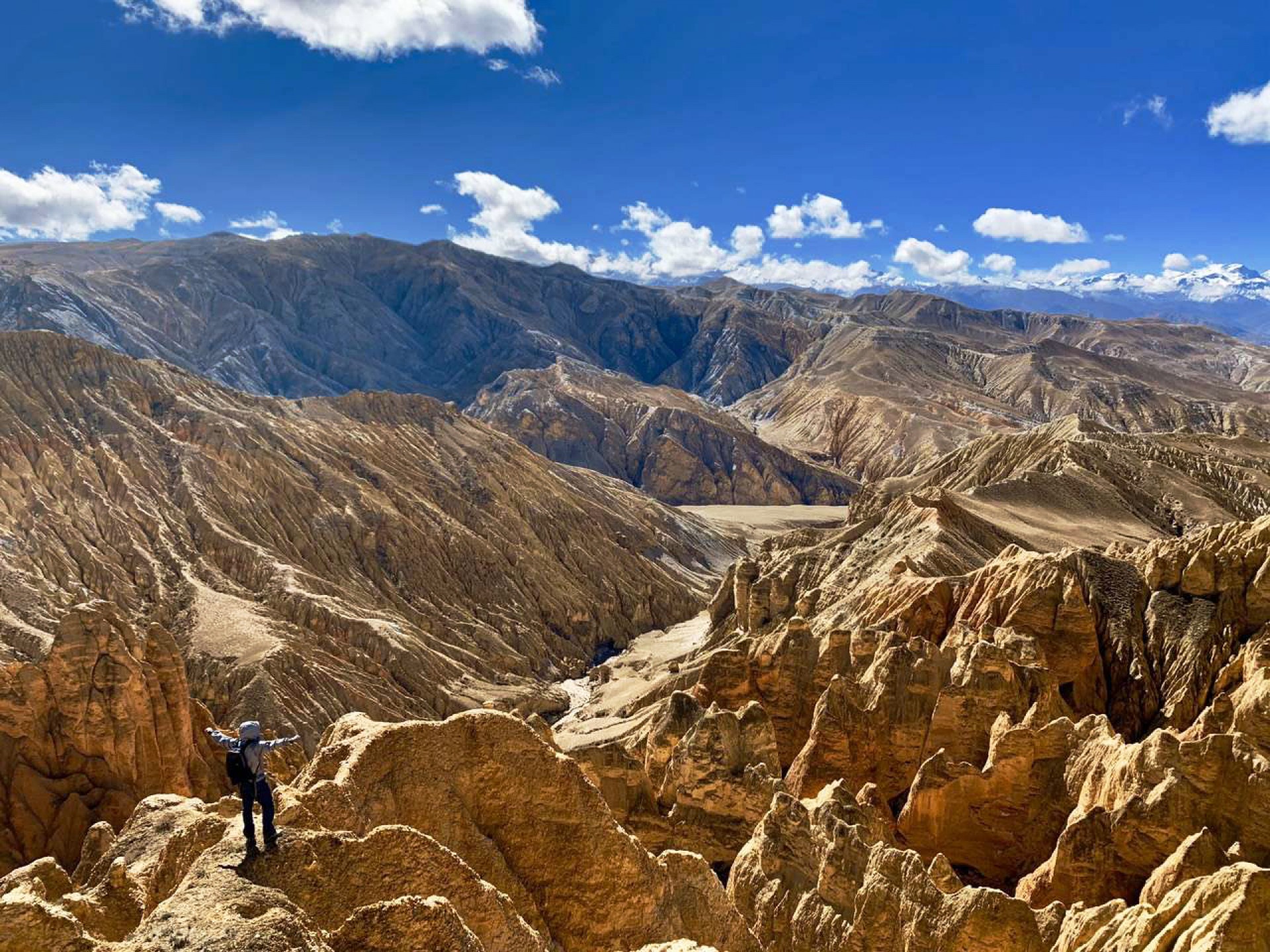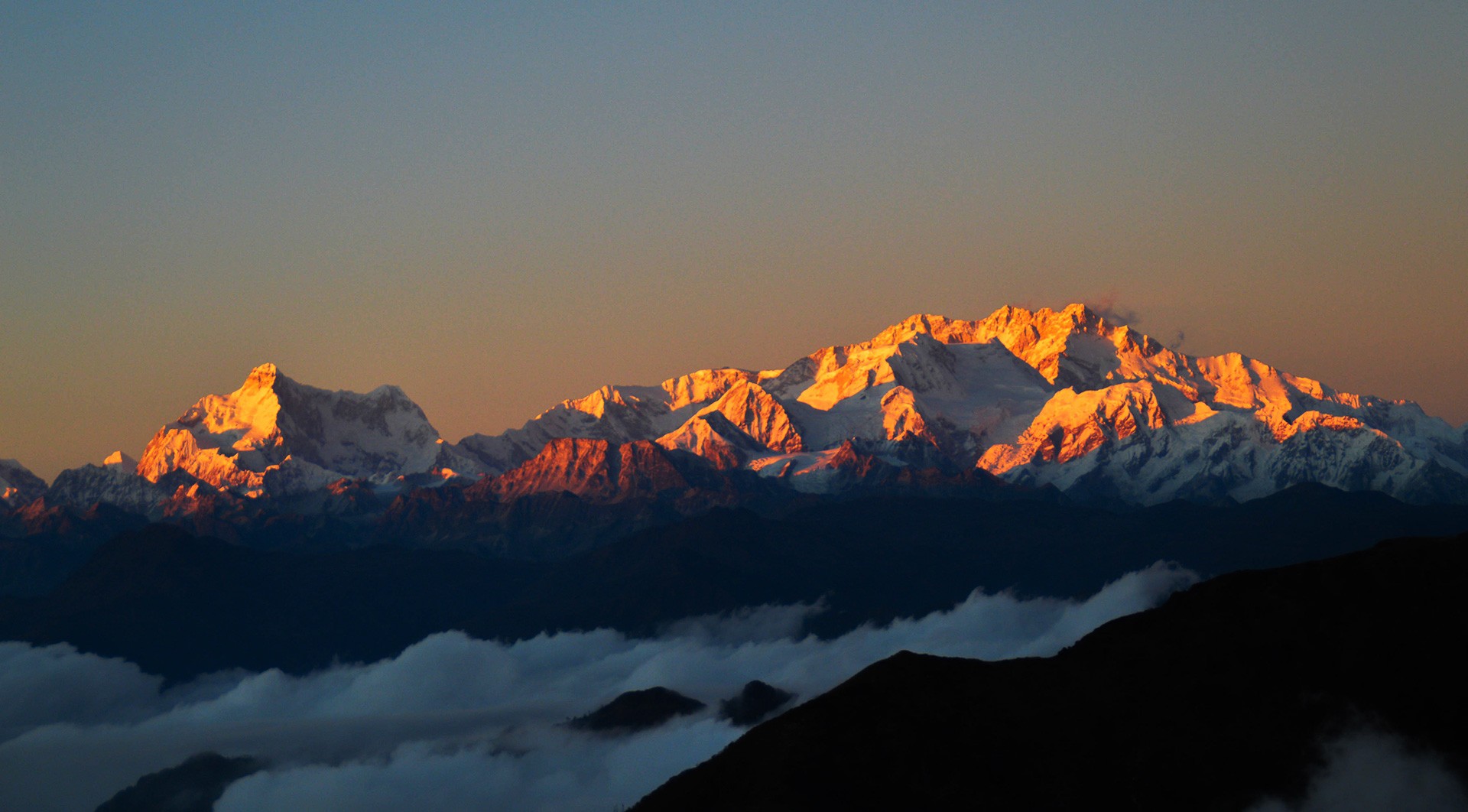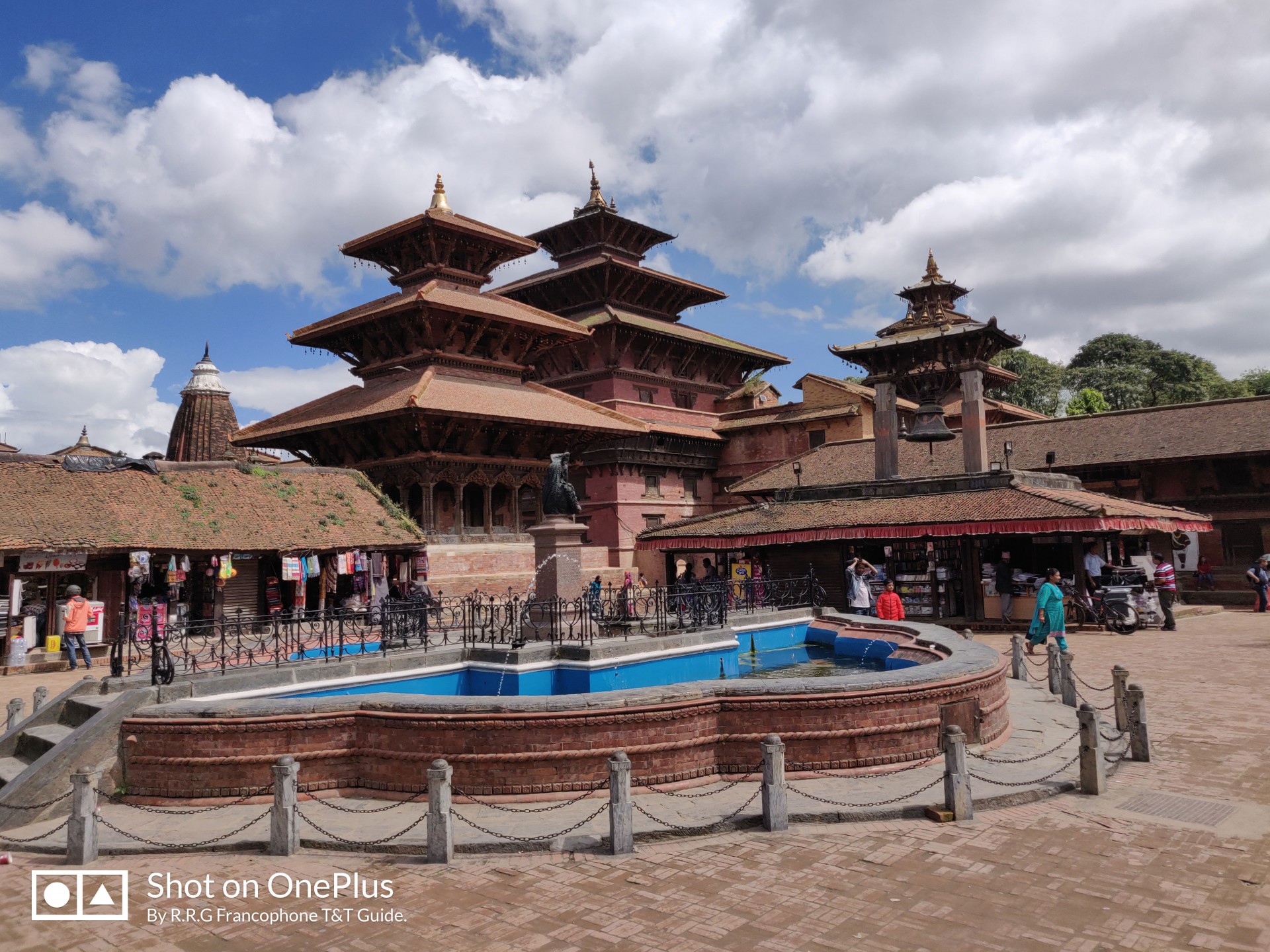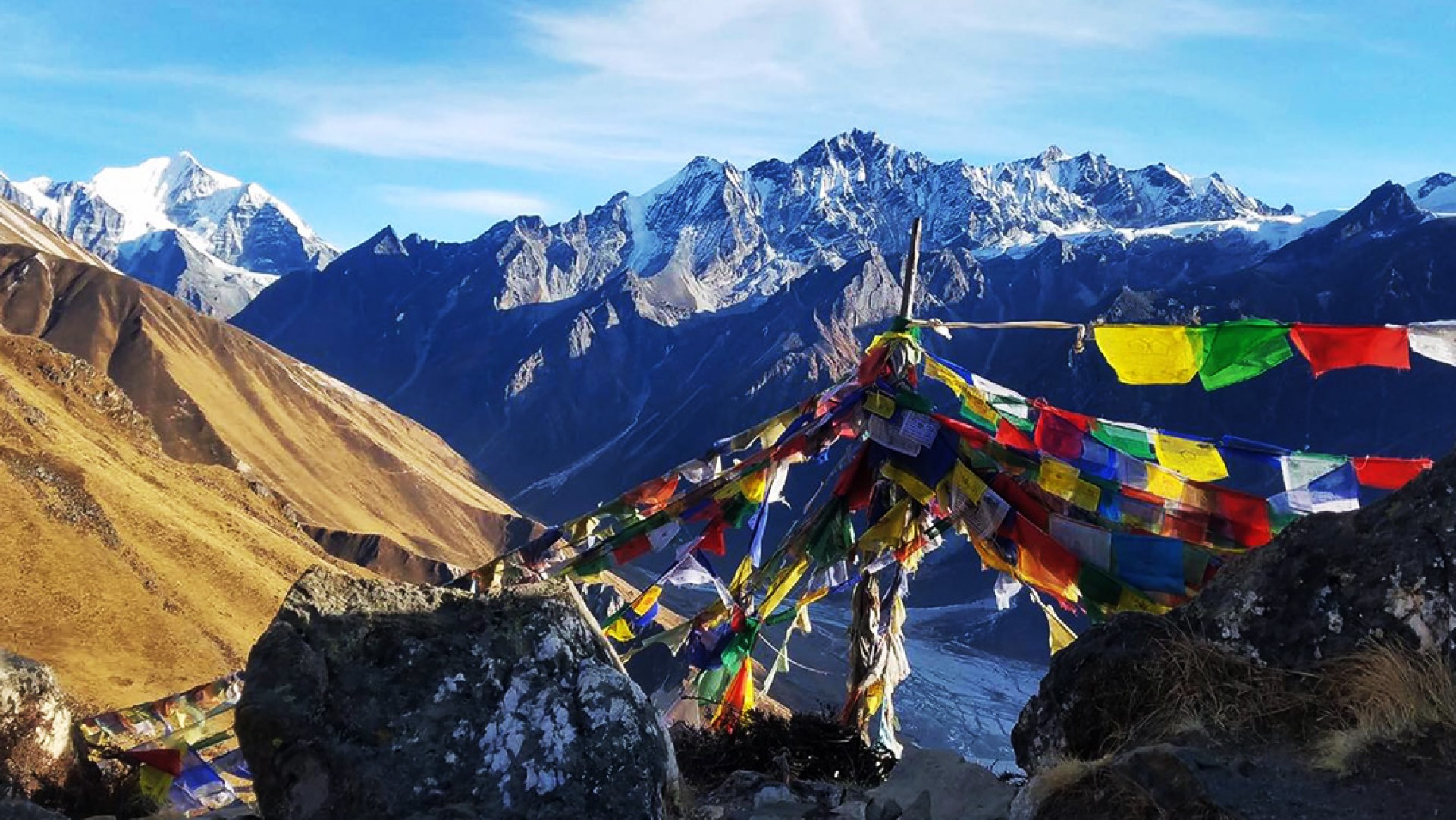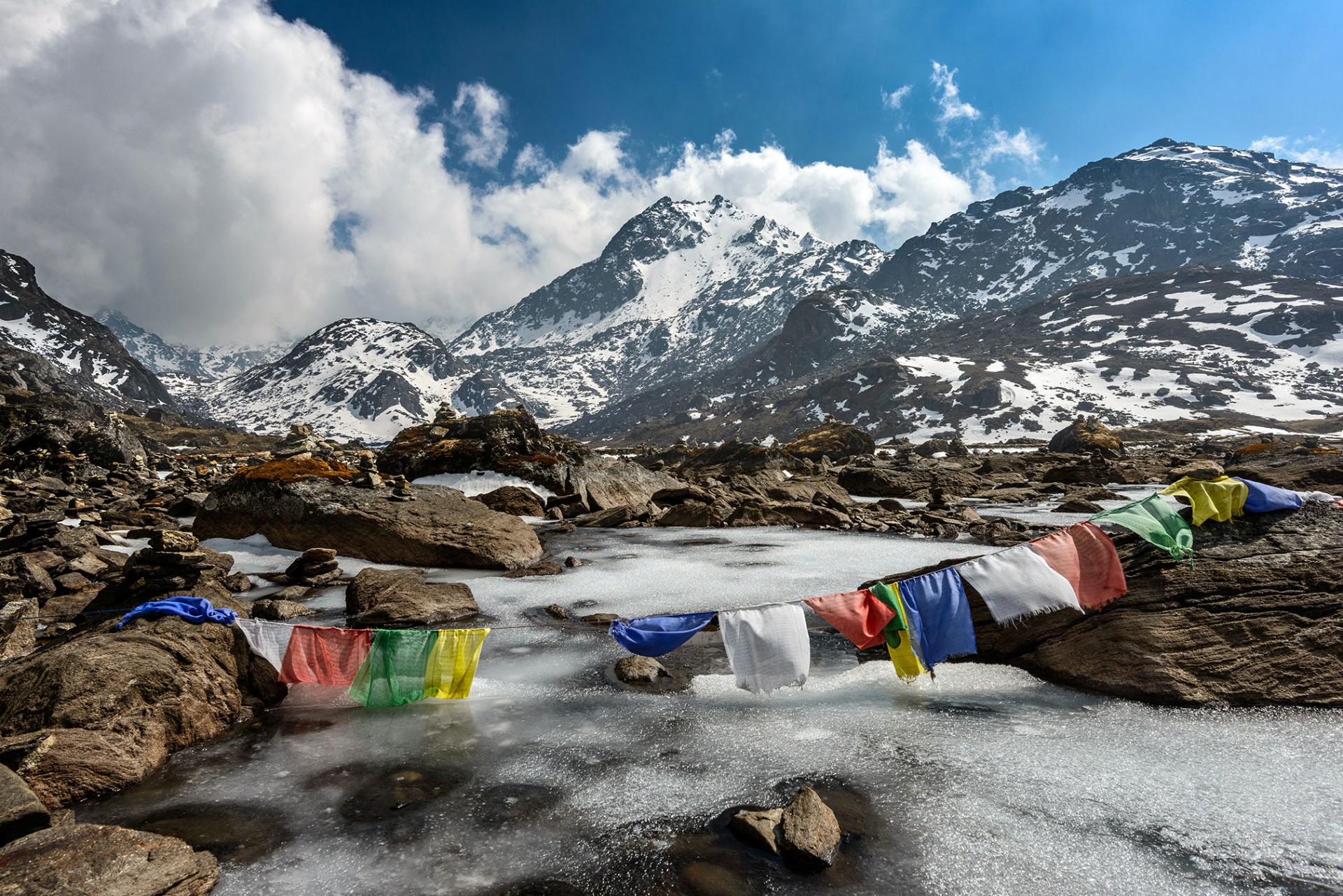Buddhist Religious Tour 8N/9D
Buddhist Religious Tour
is specially design for you to unleash the Buddhism of Nepal. 9 % out of total population of Nepal are Buddhists. Gautam Bouddha was born in Nepal in Lumbini 2600 years ago. In Nepal, there are very good harmony of two relgion Hinduism and Buddhism. So, this tour is dedicated to discover Monastery, Stupas. To start this tour we take you first the birth place of Gautam Bouddha, in Lumbini.
Highlights of this tour:
Lumbini
Lumbinī is a Buddhist pilgrimage site in Rupandehi District of Nepal. It is the place where, Queen Mayadevi gave birth to Siddhartha Gautama in 563 BCE, who achieved Enlightenment some time around 528 BCE.
A pillar discovered in 1896 with “Hida Buddha Jadatay” which means this is the the place where Buddha was born) is believed to mark the spot of King Ashoka’s visit to Lumbini. Lumbini is a 8-hour drive from Kathmandu and a 30-minute drive from Bhairahawa. The closest airport is Gautam Buddha Airport at Bhairahawa, with flights to and from Kathmandu.
Lumbini is 4.8 km (3 mi) in length and 1.6 km (1.0 mi) in width. The holy site of Lumbini is bordered by a large monastic zone in which only monasteries can be built. It is separated into an eastern and western monastic zone, the eastern having the Theravadin monasteries, the western having Mahayana and Vajrayana monasteries.
A sacred Bodhi tree, an ancient bathing pond, the Ashokan pillar, Mayadevi Temple, along with many monastries are the major highlights of Lumbini. Pilgrims from various countries perform chanting and meditation at the site everyday.
Tansen
A Beautiful Hill Station in the western part of Nepal, Tansen is the headquarter of Palpa District. It lies between Pokhara (122 km from Tansen), famous tourist city and Lumbini (85km from Tansen), birthplace of Lord Buddha, founder of Buddhism. Tansen is only 65 km from Sunauli, an Indian Border. We can see traditional newari art and architecture. It is a ancient trade route with panoramic views of himalayas as well as the plains of Terai. It is a pleasant place to visit during any season of the year. Tansen is famous for various kinds of handicrafts, textile and organic coffee. Karuwa, a water jug made of bronze, typical Nepali cap & shawl made of Dhaka textile are legendary souveniers from Tansen. Recently an organic coffee from Tansen and its surroundings is getting worldwide attention due to its unique taste. Tansen is also famous for Ginger.
Pokhara
Pokhara is a sub-metropolitan and the second largest city of Nepal. It is the headquarter of Gandaki Zone and Kaski District. It is located 200 kilometres west of the capital Kathmandu. It is 627m to 980m above sea level and covers an area of 123 sq. kms surrounded by high mountains.
It is regarded as an earthly paradise. The best time to visit Pokhara are Ocotber and November, in autumn; and February, March and April in spring. It is also starting point for the trekkers doing Annapurna region, Mustang region, and so on.
Boating in fewa lake, sunrise from Sarangkot, World Peace Pagoda, Davis fall, paragliding, Zip-line Flyer, honey hunting, village tourism and homestay, white water rafting, caves, Mountain museums, trekkings, and panoramic views of Himalayan Range (Dhaulagiri, Annapurna, Machhapuchre and Manaslu) are the major highlights of Pokhara.
Nagarkot
Nagarkot anciently known as Mandapgiri is located 32 km east of Kathamndu 2000 m above sea level. This is one of the famous touristic destination where breathtaking p anoramic view of snow-capped mountains are presented. 8 Himalayan ranges of Nepal out of 13 can be viewd from here . The ranges include Annapurna range, Manaslu range, Ganesh himal range, Langtang range, Jugal range, Rolwaling range, Mahalangur range (Everest range) and Numbur range with views of the Kathmandu valley and Shivapuri National Park.
Namobuddha
Namo Buddha is about 40 km southeast of Kathmandu valley in Kavre District. According to legend, some 6000 years ago, prince Mahasatwo, discovered a tigress about to die starving with her five little babies. Mahasatwo cuts his body and feed the tigress leaving the bones which were brought back to the village and buried in the tomb. Later in about 3500 years, Gautam Buddha came to the village and declared that he was the reincarnation of prince Mahasatwo. Gautam Buddha renamed this village Namo Buddha which means Hommage to Buddha.
It is one of the most popular Buddhist destination and a center for tourism. The main festivals celebrated here are kartik purnima and Buddha Jayanti. We can see beautiful panoramic view of snow-capped mountains and landscapes of Panauti and Balthali. This is one of the holy palce where Buddha gave his life to the tigress showing love and compassion to the entire world.
Pharping Monastery
It lies 18 km south west of Kathmandu valley. On the way lies Chobhar gorge where the Bodhisatva Manjushree is said to have cut an incision to drain water out of the lake, which once covered the valley. There is a small but picturesque temple of Adinath on the top of hill with best panoramic view of snow-capped mountains. Buddhist monastery is Pharping’s main attraction along with 17th-century temple of Goddess Bajra Yogini. Other fascinating sights here includes cave and a hand print of the Buddhist saint Padmasambhav on the rock as well as footprints of Guru Gorakhnath.
Swyambhunath
Swyambhunath lies 3 km west of Kathmandu. Swayambhunath is one of the holiest ancient Buddhist stupa in Nepal. Swayambhu means “self-existent one”. It was said to be built by King Manadeva in 460 A.D. as per the stone inscription. During the 13th century, Swayambhunath had developed into an important center of Buddhism. It is believed that kathmandu valley used to be a huge lake by the name of Nagadaha. Bipashwi Buddha sowed the seed of lotus flower that bloomed in the middle of a lake. A lot of devotees come to pay homeage to the holy lotus. Manjushree (God of knowledge and wisdom) came from China and paid homage to the holy lotus from the place called Nilgiri (which is present day Nagarkot). He drained the water out of the lake from the palce called Chovar. It is believed that he coverd the holy lotus with the dome and meditated.
Temple of Harati Ajima, Nagpur, Pratappur, Anantapur, Agnipur, Santipur, Vasupur, Bayupur, Bihars, and Chaityas, prayer flags(representing five cardinal elements of life) are the major highlights of Swayambhu. Swayambhu is perhaps the best place to observe religious harmony in Nepal.
Boudhanath
Appoxmately 6-7 km north east from center of Kathmandu, Boudhanath Stupa is commonly known as Boudha or Boudhanath (Lord of Wisdom). This is the largest stupa in the world with 120 ft in diameter, 1 hector in width, and 43.25 m in height with area of approxmately 6,756 sq meters. Many people believe that Bouddhanath was constructed in the 4th century by king Mandeva right after the death of Buddha. The stupa is said to entomb the remains (Astidhatu) of a Kashyapa Buddha. It is believed that Jyajima requested a Valley king for the donation of ground required to build a stupa. She was told to get as much place as she could cover with the buffalo skin. She was so clever that she cut a buffalo skin into thin strips. The king had no choice but to give her the land. It is said that Jyajima worked for four years and died then it took almost three years to complete the construction after her death, which was completed by one of her son. Now we do have around 50 monsatries around boudhnath area.
We can buy colorful Thangkas, Tibetan jewellery, hand-woven carpets, masks, and khukuri (knives) in Boudha. Smaller stupas are located at the base. Gompa monasteries, curio shops, and restaurants surround Bouddhanath. Restaurants with roof-top provide good food and excellent views of Bouddhanath. After 1959 Chinese invasion in Tibet ten thousand of Tibetans settteled down here since then the temple has become one of the most important centers of Tibetan Buddhism. Today it remains an important place of pilgrimage and meditation for Tibetan Buddhists and local Nepalis, as well as a popular tourist destination. Losar (Tibetan New Year) and BuddhaJayanti are major festival celebrated in Boudhanath.
DETAIL ITINERARY:
Day 01: Arrival At Tribhuvan International Airport (TIA), Kathmandu. +−Our guide will be waiting you with our office name show card "KOSELI ADVENTURE" at TIA, welcome you with the garland of flowers and transfer to Hotel. According to your arrival time at Kathmandu, our guide take you to the oldest bazaar of Kathmandu called " Aason and Indrachowk" where Nepalese people buy almost everything they need in their daily life. We can also observe 2/3 Hindu Pagoda Temples. After the visit our guide hire some Rickshawo (three wheels cycle) to take you to First touristic city of Nepal, "Thamel" where you can buy your trek/tour necessities and also can exchange the money. Back to Hotel.
Transfer : 35 mins
Visiting Time : 2 hours
Dinner : At Utsav Restaurant (well known for Nepali cultural dance show)
O/N : Hotel.
After hot breakfast at Hotel, we drive to Domestic Airport for Bhairahawa Airport then drive about half an hour to Lumbini. Check Inn Hotel Bouddha Garden. After lunch in the afternoon, visit Lumbini garden and surroundings. Back to Hotel.
Transfer : 1 hour
Flight : 35 mins
Lunch : Hotel Bouddha Garden
Dinner and O/N : Same Hotel.
This whole day is dedicated to know Buddhism of Nepal, we visit Mayadevi Temple, Eastern and Western Monastic zone of Theravada and Mahayana or Bajrayana respectively. We do some meditation on this holy place. Back to hotel.
Visiting Time : 4 hours
Lunch : Hotel
Dinner and O/N : Hotel.
After hot breakfast at hotel, we drive to Tansen, a beautiful hill station where we take lunch then continue to drive to Naturally Blessed Pokhara.
Transfer : 6 hours
Lunch : Tansen
Dinner and O/N : Lake Side Pokhara
Wake up early in the morning at 5:00am, drive to Sarankot Hill for sunrise view with the snow-capped mountains namely Dhaulagiri, Annapurna South, Hiuchuli, Machhapuchre etc. We will have café or tea in the Sarankot Hill, drive back down to Bindashini Temple. An oldest temple in the Pokhara valley. A hindu goddess temple where if lucky we can see the marriage ceremonies and the beautiful view of mountains and landscapes. Drive to Hotel and breakfast. After breakfast, drive to Davi’s Fall, locally known as Patale Chhango was named Davi’s Fall after a Swiss lady was swept away and died in 31 july 1961. The water flowing from Phewa lake shows a wonderful fall. We find hollow sandy part and a heavy fall of water within its natural trench. Then drive to WORDL PEACE PAGODA, it is a massive Buddhist stupa located on a hill top (Rani Ban) just southern hill of Phewa Lake. This stupa is the symbol of peace where the huge idols of Lord Buddha from Japan, Sri Lanka and Thailand have been installed. From here we can enjoy the breathtaking view of Himalayan ranges, lakes, and the Pokhara Valley. Drive back to Phewa lake for 1 hour boating and visit Tal Barahi Temple, it is located on a small island in the middle of Phewa Lake just offshore from the lakeside. The atmosphere is so tranquil that we can enjoy the green forest scenery just across the south end of the lake, full scale scenery of the lake and amazing reflection of the Annapurna and Fishtail mountains on the surface water of the lake. Free time at lakeside, dinner at Hotel.
After hot and healthy breakfast at hotel, we drive to Pokhara Airport to take morning flight to Kathmandu.
We visit Syawambhunath Stupa on the top of the hill then Bouddhanath Stupa, biggest stupa of Asia. We take lunch on the roof top terrace with beautiful view of Bouddhanth Stupa.
Afternoon, we drive to Nagarkot, beautiful hill station famous for sunrise and sunset views with the snow-capped Himalayan Range.
Flight : 25 mins
Transfer : 2h30min
Lunch : Bouddha
Dinner and O/N: Nagarkot Hotel.
We get up early in the morning to admire sunrise view of the breathtaking Himalayan Range. Breakfast and drive to Dhulikhel, district headquarter of Kavre District, also well known another hill station for picnic and stretching views of Himalayan and landscape. We start hike from here to Namobuddha.
Transfer : 2 hours
Hiking Time : 2h30min
Lunch/Dinner/Overnight : Namobuddha Resort.
After hot and organic breakfast at Namobuddha Resort with the super panoramic view of Himalayan Range, we drive to Pharphing Monastery to the south. Visit Monastery and drive back to hotel. Free Time.
Transfer : 2h30min
Visiting Time : 2h30min
Lunch : Pharphing
Dinner : at Utsav Restaurant (well known restaurant with Nepali cultural dance show)
O/N : Kathmandu Hotel.
According to your flight schedule we drive to Tribhuvan International Airport (TIA) for departure to your home country.
Transfer : 35 mins




